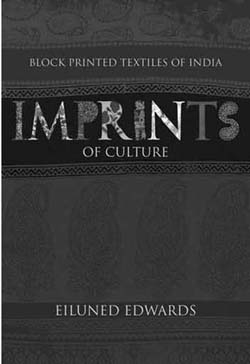Block printing was the most widespread means of printing textiles, which was eventually displaced by the advent in India of roller printing in the 19th century and commercial screen printing in the 20th century. Indian block prints are hailed for their permanency of colours. The book is an account of the history of block printing, how it was a significant source of revenue and how it has evolved in an innovative way. There are relevant pictorial references to fabric, blocks, artisans making it an interesting read. The decline in popularity of block printed fabric and resurrection of the art has been documented quite extensively.
The author has given a historical outline of block printing, its existence in bygone era and civilization and evidence of early textile technologies. Indian textiles have been found in use in the Harrappan period. There is evidence of its expansion from India to the harems of Susa and Ecbatana. The evidence of block printing is elusive in the early period, but there have been findings of terracotta block, fragments of coarse cotton which suggest that the practice of block printing was in use. Edwards refers to Pupul Jayakar who had asserted and argued that five thousand year ago, trade in cotton cloth known as sindu existed between Harappa, Baluchistan and Babylon. The steatite figurine of a bearded man wearing a mantle with a trefoil design indicates that Harrappans were using decorated textiles.

